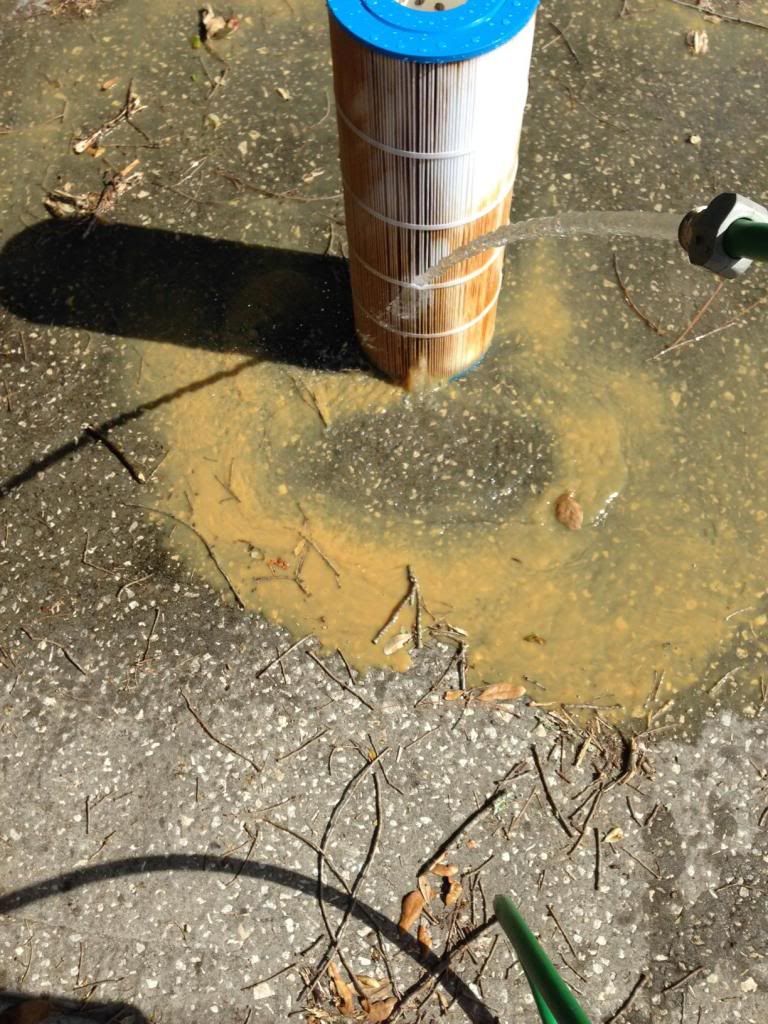Hi, I am a first time pool owner.
We have an 18 ft Intex pool that we just put up on June 30th. After two days to fill it from our well, it turned brown at the addition of the chlorine and we now know that this is the iron in the well water. Globules of rust are all over the pool sides giving the water the brown color, but the sample water itself is clear.
I have researched and found the homemade fiberfill filters that are supposed to help. My husband will be making one tonight when he gets home from work. Here is the info that I hope will help us with answering our problem.
July 2, 2015
8:00 AM
Pool temp 64 degrees
Filter shut off sometime during the night and we restarting it at 6:30 AM
1 1/2 gallon of bleach added the evening of July 1st
The test results from the Taylor K-2005 test kit are as follows:
Cyanuric acid - the test sample did not turn cloudy at all8.4
Total Alkalinity- 90ppm
pH-no color, tried base demand and couldn't add enough drops to get a color change.
Free Chlorine- no change I did the test 3 times, with 9mL, 4.5 mL and 1.8 mL
Total Chlorine- no change
Total hardness- I did the test twice, with 25mL and then 10mL for a result of 260ppm
Test results from Aqua Check-7 test strips
Cyanuric-30-50
Total Alkalinity- 120
pH-8.4
Free Chlorine-20
Total Chlorine-10
Total hardness-100
We would really appreciate any advice you can give to help us get the pool clear and swimmable.
We have an 18 ft Intex pool that we just put up on June 30th. After two days to fill it from our well, it turned brown at the addition of the chlorine and we now know that this is the iron in the well water. Globules of rust are all over the pool sides giving the water the brown color, but the sample water itself is clear.
I have researched and found the homemade fiberfill filters that are supposed to help. My husband will be making one tonight when he gets home from work. Here is the info that I hope will help us with answering our problem.
July 2, 2015
8:00 AM
Pool temp 64 degrees
Filter shut off sometime during the night and we restarting it at 6:30 AM
1 1/2 gallon of bleach added the evening of July 1st
The test results from the Taylor K-2005 test kit are as follows:
Cyanuric acid - the test sample did not turn cloudy at all8.4
Total Alkalinity- 90ppm
pH-no color, tried base demand and couldn't add enough drops to get a color change.
Free Chlorine- no change I did the test 3 times, with 9mL, 4.5 mL and 1.8 mL
Total Chlorine- no change
Total hardness- I did the test twice, with 25mL and then 10mL for a result of 260ppm
Test results from Aqua Check-7 test strips
Cyanuric-30-50
Total Alkalinity- 120
pH-8.4
Free Chlorine-20
Total Chlorine-10
Total hardness-100
We would really appreciate any advice you can give to help us get the pool clear and swimmable.


